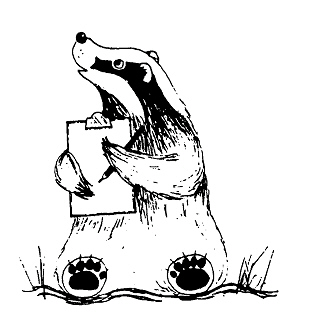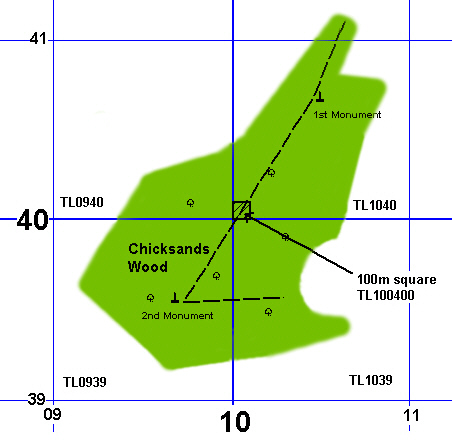 |
||||

It wasn't so many years ago that I took my first tentative steps at reporting the wildlife I thought I might be seeing to those scary things called "County Recorders", fearful of falling short of high expectations and showing my ignorance.
It turned out to be quite simple really, as a good wildlife record only needs six pieces of information:
| When: | The date |
| Who: | The name(s) of the observer(s) |
| What: | The species |
| The nature of the observation | |
| Where: | A description of the location |
| An appropriate grid reference |
The "When" and the "Who" are straightforward enough, being the date of the observation, and who saw it. If you can't remember the exact date, then the month, season or even just the year are useful.
The "What" has two elements to it and can vary quite a bit because wildlife is so diverse. Firstly there is the species' name. Identification may be tricky, especially when first setting out, but with thousands of species in the county even lifelong naturalists can't identify them all, so don't be afraid to ask for help. Take a picture if you can, or possibly provide a sample, or simply describe what you saw. Careful observations can often lead to identification. Also don't be embarrassed to report common species - if they aren't reported then the records won't show them to be common!
The second part of the "What" is a vague thing that we might call "the nature of the observation". This gives extra information about what was seen and will vary between species groups. For example, for a Badger it might say that it was a live animal or a road-kill, a sett, tracks, a latrine or fur. For a butterfly it might be the quantity seen of an adult, egg, caterpillar or chrysalis, a mating pair or egg-laying (and on what). And so on for other wildlife groups. Each County Recorder will be glad to let you know what information is relevant for their group.
The "Where" also has two elements to it; a location description and a grid reference. From having worked in the Bedfordshire and Luton Biodiversity Recording and Monitoring Centre (the BRMC) for the last few years this seems to be the part of a record that causes most difficulty, which is a pity as it is very important to know where something is in order to protect it.
One common problem is that the location may be vaguely described. For example it may not be possible to re-find an important site if all that is provided is a tetrad grid reference (a tetrad is a 2km x 2km square) and a vague location description, such as the name of a nearby village, or saying that it was within a site such as a wood that is very large.
Occasionally a location may be too precisely specified. This may seem to be impossible, but it can happen when an observer wanders around a large site but then reports all their observations as coming from a single 100m grid square at the centre.
Both problems can be avoided by assigning records to the 1km square in which the observation was made and then providing in the location description the region within that square where they were made, e.g. "within the wood", or "in the grassland outside the wood". This method works well for common species. If something more notable is encountered then the location should be described more precisely and a 100m or 10m grid reference provided (possibly using a GPS unit) to allow the location to be re-found in the future. County Recorders can advise on what they consider notable for their group.
| Chicksands Wood usefully illustrates some common problems... |
 |
|
1. It sits on the junction of four 10km squares,
so which square did the record come from if the locational information provided says only "Chicksands Wood"?
(This is a headache for County Recorders who need to assign a grid reference to every record if none is provided by the observer).
In which square should the record appear on a dot map? 2. The wood exists in five 1km squares, and ideally each should be recorded separately. e.g. If eight Silver-washed Fritillaries are seen in the wood, by recording the 1km squares separately the species' distribution within the wood will be clearer. 3. The 100m grid square TL100400 is roughly in the middle of the wood. If records were to be assigned to this "central" square rather than to the actual square(s) this could lead to confusion about the location in the future. Where the precise grid reference is unknown it is usually better to report the 1km square and say that it was in the wood (rather than in a surrounding field). 4. The area in this example is 2km x 2km, the same as a tetrad. Trying to rediscover the location of a small, but potentially important site, given only a tetrad grid reference (more than 1.5 square miles) is quite a challenge! |
Some people have problems with figuring-out grid references and so do not provide one. A good location description will enable the County Recorder to assign one, but as this puts extra workload on them please do try to provide a grid reference if you can. This also allows them to cross-check a grid reference against a location description and pick up the occasional error that inevitably creeps in, even with seasoned observers.
And that's about it really. By providing these six things our records can be used to map species distributions, to detect changes of distribution, abundance or seasons, help with understanding the ecology of species and with the conservation of Bedfordshire's wildlife. With so much development destined for the county it is important to feed in our records so that informed decisions can be made.
So, where should records be sent, and in what format? The County Recorders have been appointed to collate records for their specialist groups and will be pleased to receive your records and discuss your observations. The full list of Recorders and their contact details is on the BNHS events programme and on this website in the Contacts section. Just contact the one(s) that seem appropriate and they will be able to advise you.
Our Adnoto system allows online recording for several groups. A few Recorders have provided standard forms or spreadsheets for their species, these can be downloaded from their pages in the Wildlife Recording section, please ask should you need a paper copy.
I hope this has encouraged you to start recording if you've never done it before and then to submit your observations to the Recorders. Oh and don't worry, they aren't that scary after all, except for me!
Thanks to Joan Childs for permissionto use her delightful "Recording Badger"!
Joint Bedfordshire Recorder for Butterflies